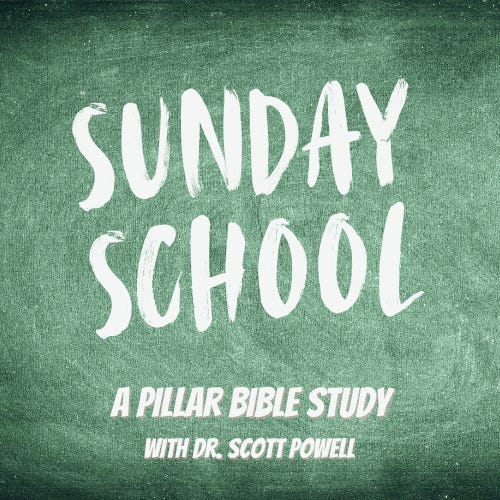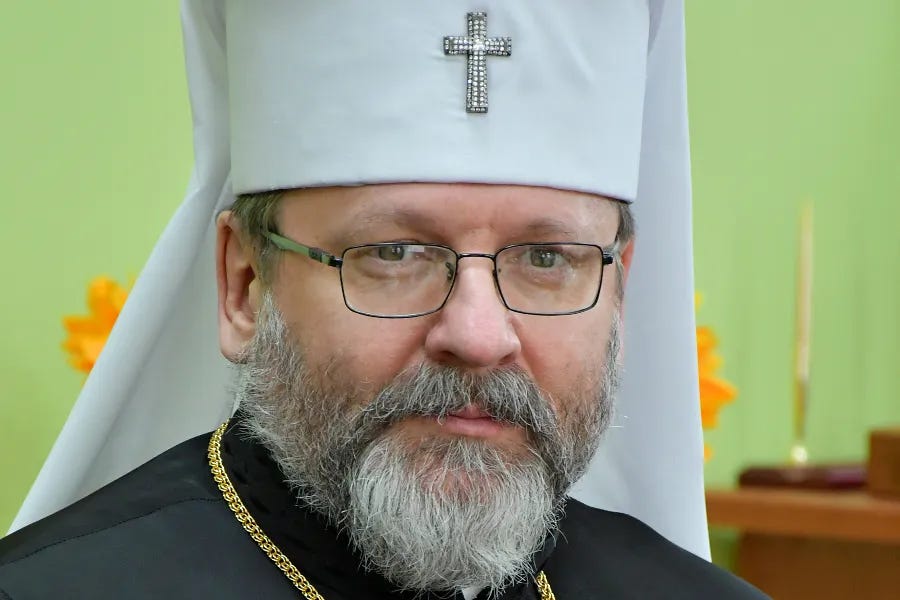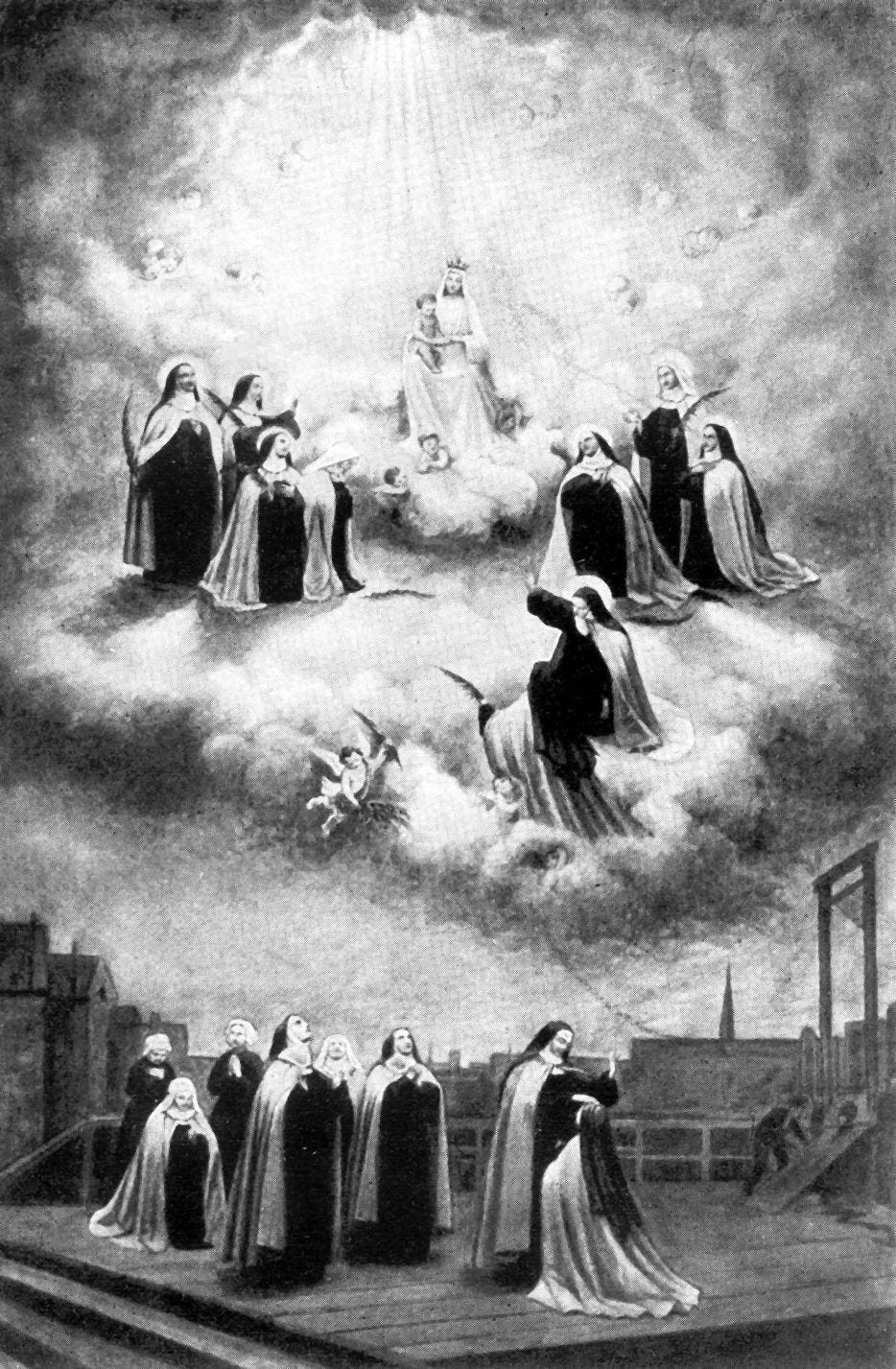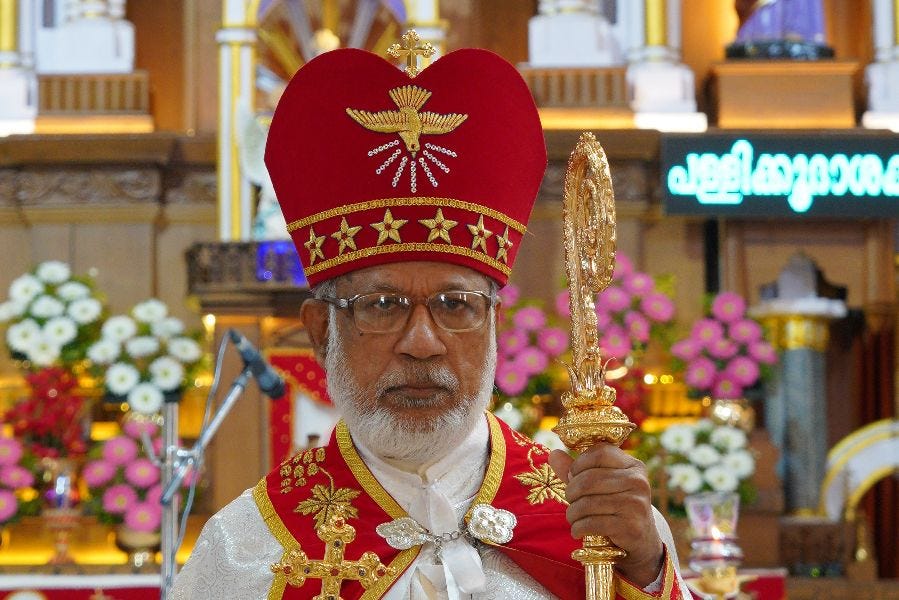
An eagerly awaited meeting of bishops of the Syro-Malabar Catholic Church ended Saturday with no breakthrough over an explosive liturgical dispute.
On the final day of the Jan. 9-14 gathering at Mount St. Thomas in Kakkanad, southern India, Syro-Malabar leader Cardinal George Alencherry issued a five-page letter describing the latest efforts to resolve the conflict.
The Major Archbishop of the Syro-Malabar Church — the second-largest of the 23 Eastern Catholic Churches in full communion with Rome — said that the Synod of Bishops was unable to “announce a decision acceptable to all.”
The Synod of Bishops — the Syro-Malabar Church’s legislature — endorsed the uniform liturgy in 1999 in an attempt to overcome differences in the way the Church’s Eucharistic liturgy was celebrated.
Some priests faced the altar throughout the liturgy, known as the Holy Qurbana, while others faced the people. Under the “uniform mode,” the priest faces the people during the Liturgy of the Word, turns toward the altar for the Liturgy of the Eucharist, and then faces the people again after Communion.
In August 2021, the Synod of Bishops called for the uniform liturgy — supported by Pope Francis — to be introduced in all 35 of the Church’s dioceses from November of that year. But there was large-scale resistance in the Ernakulam-Angamaly archdiocese, which is the Major Archbishop’s see and has around half a million members.
The vast majority of the archdiocese’s priests and lay people want to retain the Holy Qurbana facing the people, calling for it to be recognized as a well-established liturgical variant in harmony with the reforms of the Second Vatican Council. Protests against the uniform liturgy have been marked by street brawls, hunger strikes, the burning of pastoral letters, and the immolation of cardinals’ effigies.
In his Jan. 14 letter, Cardinal Alencherry said that the Synod of Bishops had “objectively assessed the pastoral issues” surrounding the uniform liturgy’s introduction in Ernakulam-Angamaly archdiocese.
He underlined that the final decision on liturgical matters lay with the Synod of Bishops and the Holy See, insisting that all Syro-Malabar priests were required to accept the uniform liturgy.
Although Ernakulam-Angamaly archdiocese is Cardinal Alencherry’s see, an apostolic administrator has overseen its day-to-day governance since 2019 due to an ongoing financial controversy.
The cardinal said that this meant that the Synod of Bishops cannot take direct decisions regarding the archdiocese, the largest in the Syro-Malabar Church.
He noted that Archbishop Andrews Thazhath, the apostolic administrator since July, had created a six-member committee that met with supporters and opponents of the uniform liturgy.
The cardinal said that the discussions were aimed at giving “generous time” to parishes in the Ernakulam-Angamaly archdiocese to adopt the uniform mode.
He added that the Synod of Bishops’ members had hoped to foster “the process of reconciliation” by introducing the uniform Mass at St. Mary’s Cathedral Basilica on Sundays.
The basilica has been the focal point of clashes between supporters and opponents of the uniform mode in recent weeks. On Dec. 24, lay people stormed the sanctuary while priests who supported the liturgy facing the people were praying at the altar. The protesters pushed the portable altar to the side of the sanctuary, sending sacred vessels clattering to the ground.
Cardinal Alencherry said that if the members of the Synod of Bishops had reached an agreement on the steps to end the liturgical dispute, they had intended to celebrate the Holy Qurbana together at the basilica “to accelerate the journey towards unity.”
“But we regret that at the conclusion of the Synod, we could not announce a decision acceptable to all, as some who did not approve of the uniform liturgy refused to adhere to the above-mentioned principles for reasons that are not yet clear,” he said.
The 77-year-old cardinal added that the bishops had decided to seek the help of “a few laymen” to continue the discussion. But he stressed that the introduction of the uniform liturgy itself was not up for debate.
“All must understand the truth that the Synod cannot reach a settlement at the sacrifice of the authentic teachings and decisions of the Church and the common good,” he wrote.
Cardinal Alencherry recalled that the uniform liturgy sought to blend the altar-facing and people-facing modes of celebrating the Holy Qurbana. He argued that its implementation should not be seen therefore “as a victory or defeat for either side.”
He said that the Synod commended Archbishop Thazhath for his efforts to carry out his mission as apostolic administrator, which have provoked demonstrations and led him to seek police protection.
Cardinal Alencherry said that the clashes in St. Mary’s Cathedral Basilica had inflicted “very deep” wounds on the Church. He noted that Archbishop Thazhath had appointed an investigatory commission, which will send its report to Rome.
The cardinal called on all Syro-Malabar Catholics to make a holy hour in reparation for the incidents at the basilica.
“All priests, consecrated persons, and lay brothers and sisters should be careful not to make the Holy Eucharist, which we offer to be reconciled, a platform for disunity,” he wrote, also calling for restraint among online commentators.
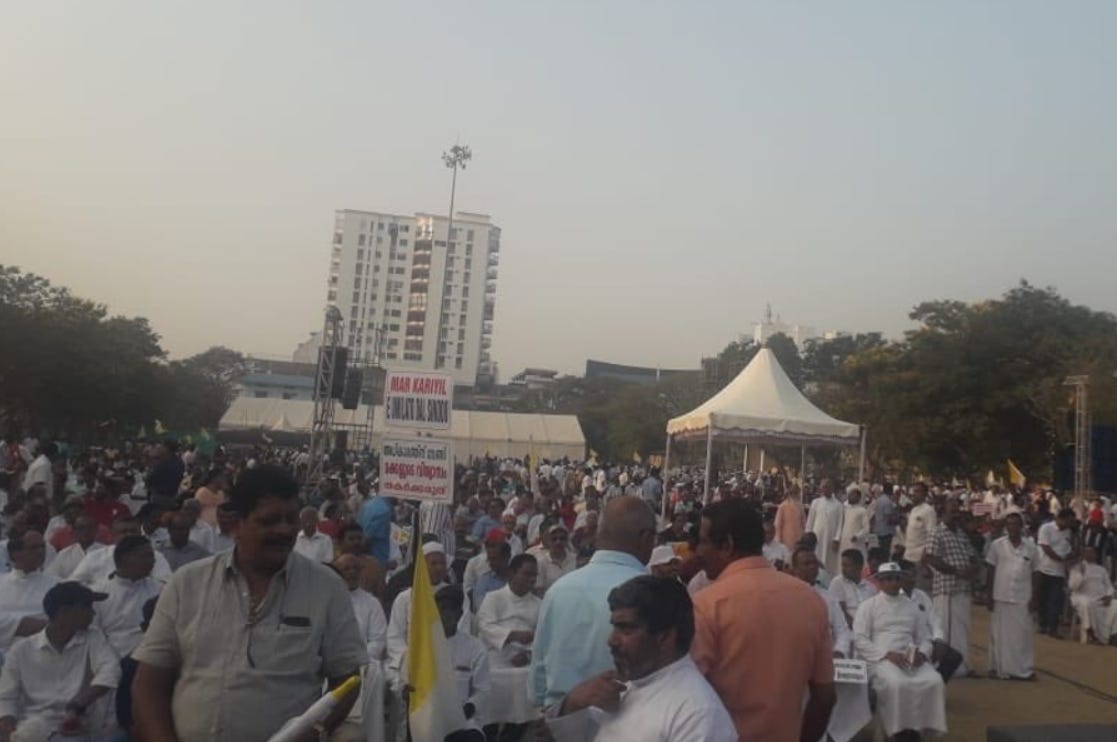
On Jan. 15, the day after the bishops’ meeting ended, opponents of the uniform liturgy renewed their protest.
Demonstrators at a rally at Marine Drive Ground in Kochi carried signs saying “Mass facing people is our right,” “We demand justice from the Synod,” and “Holy Mass is the center of our lives.”


